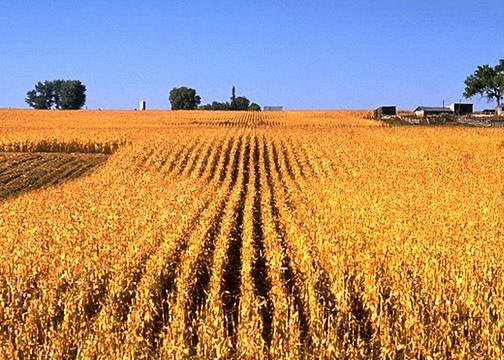Extension Update by Gary L. Zoubek - Extension Educator
Coming Events
Oct. 24, 2011 – York Extension Exec. Meeting, 8:00 pm., Extension Office, York
Nov. 3, 2011 – Ag at the Crossroads Conference, Lancaster Event Center, Lincoln
2011 Ag at the Crossroads Conference Planned
I’m guessing that harvest may not be completed by November 3rd, but I’m sure many area farm families will be interested in attending this year’s Ag at the Crossroads Conference since it will focus on the ownership change of generational assets in control of Nebraska farms and agricultural businesses. Cost of the conference is $45.00 if registered prior to October 28th and $50.00 at the door. The conference will be held at the Lancaster Event Center and it looks like they have a great program planned. Registration begins at 8:30 a.m.
The program includes:
9:00 am Family Business – Symbolically Speaking
David Specht, Coordinator of Family Business Programs & Lecturer, University of Nebraska-Lincoln College of Business Administration and Ag Economics Department
10:00 am The Continuity Quotient – 7 Themes Families Must Master for Generational Succession
David Specht
11:00 am The Scope of Nebraska Agricultural Assets
Bruce Johnson, Professor, Agricultural Economics, University of Nebraska-Lincoln
12:00 (noon) Lunch
1:00 pm The Importance of Accounting in Succession Planning
Larry Kopsa, CPA, Partner in Kopsa Otte CPA and Advisors, York Nebraska
2:00 pm Flexibility in Estate Planning Options
Joe Hawbaker, Attorney, Hawbaker Law Office, Omaha, Nebraska
3:00 pm Real Life Family Financial Experiences
Tina Barrett, Executive Director, Nebraska Farm Business Inc., Lincoln Nebraska
Check our website for a registration form http://York.unl.edu.
Cropping Update
We had a chance to get the RoundUp Ready Soybean Plot on Jerry Stahr’s harvested last Monday. The plot varied from 59 to 71 bu./acre and average 66 bu./acre. It’s sure been windy and dusty, but hopefully the little rain we received the past couple of days will help a little! Maybe the soybeans will gain a couple points of moisture and the fire index will go down a little!
This past week I’ve received two questions about green soybean plants near lights in the city or along the interstate highway.
Jim Specht, one of our soybean Specialists shared a little info about this since it occur each year! He indicated that soybean varieties of maturity group I, II, III, & IV flower within 28 to 32 days after floral induction occurs during the V0 to V1 stage of development, because they are short-day photoperiod plants. The days are already short enough in May to trigger floral induction for all varieties bred for our region.
What’s happening under the lights is that the nights are too short or non-existent due to a 24-hr on street light, (especially the intense metal halide or mercury vapor ones) floral induction is also delayed or prevented, and the plants remain more or less permanently vegetative producing no or very few flowers and pods directly under the light, an effect that diminishes for plants growing farther away from the light.
That’s why the soybeans next to the lights might not even be harvested! Next to the lights would be a good place for forage soybeans to be used for livestock feed, but not for grain!
The windy dry conditions have continued to dry down the corn and I’ve had reports of corn in the low 20’s and teens. Hopefully we’ll get the Corn Grower plot harvested this week or so!
Oil Spill Prevention, Control and Countermeasure (SPCC) Program
I’ve received a couple calls about Oil Spill Prevention, Control and Countermeasure (SPCC) Program. The goal of this EPA program is to prevent oil spills into water of the United States. A key element of the SPCC program calls for farmers and other facilities to have an oil spill plan, called an SPCC plan.
I’ve been asked questions about who needs a plan and who doesn’t. SPCC applies to a farm which:
- Stores, transfers, uses or consumes oil or oil products, such as diesel fuel, gasoline, lube oil, hydraulic oil, adjuvant oil, crop oil, vegetable oil or animal fat; and
- Stores more than 1,320 US gallons in above ground containers or more than 42,000 US gallons in completely buried containers; and
- Could reasonably be expected to discharge oil to waters of the US or adjoining shorelines, such as interstate waters, intrastate lakes, river, and streams.
If your farm meets all these criteria, then your farm is covered by SPCC.
I’m not sure how many producers this may affect, but for counting purposes, only containers 55 US gallons or above are counted. Also adjacent or non-adjacent parcels, either leased or owned, may be considered separate facilities for SPCC purposes. Containers on separate parcels (that the farmer identifies as separate facilities based on how they are operated) do not need to be added together in determining when the 1,320-gallon applicability threshold is met.
If you have more than the 1,320 US gallons or the 42,000 US gallons for underground storage, you need to prepare and implement a SPCC plan. If the storage that you have at any one location is between 1,320 and 10,000 gallons in aboveground storage containers and your farm has a good spill history, you may prepare and self certify your own plan. If your farm has more than 10,000 gallons, or has had an oil spill you may need to prepare and SPCC plan certified by a PE.
My understanding is that these plans are not new. The information you will I need to prepare an SPCC Plan for your farm includes:
- A list of the oil containers at the farm by parcel (including the contents and location of each container);
- A brief description of the procedures that you will use to prevent oil spills. For example, steps you use to transfer fuel from a storage tank to your farm vehicles that reduce the possibility of a fuel spill;
- A brief description of the measures you installed to prevent oil from reaching water (see next section);
- A brief description of the measures you will use to contain and cleanup an oil spill to water; and
- A list of emergency contacts and first responders.
If you are eligible to self certify and no aboveground container on your farm is greater than 5,000 gallons in capacity, you may use a plan template that is available on the EPA website: http://www.epa.gov/osweroe1/content/spcc/tier1temp.htm
A couple other links with info about SPCC can be found at: http://www.epa.gov/oem/docs/oil/spcc/spccfarms.pdf
http://www.epa.gov/osweroe1/docs/oil/spcc/qualfac_fs.pdf
I have copies of these materials printed at my office. Stop by if you’d like a copy.


































